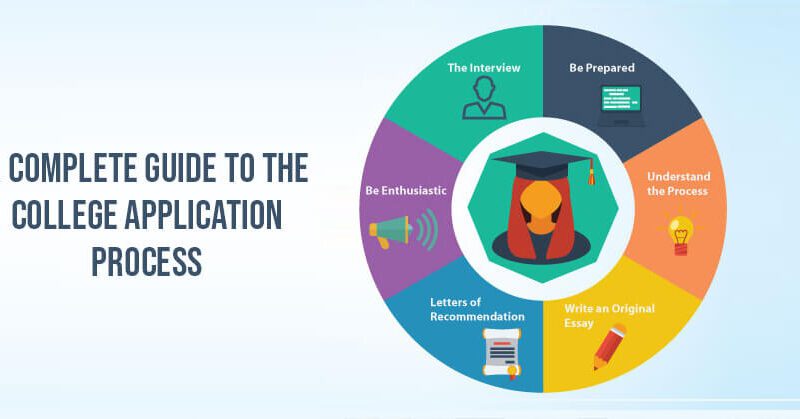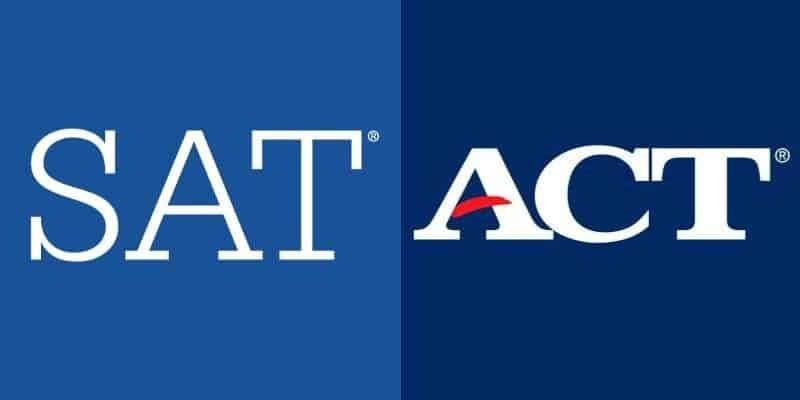How to apply to Colleges: Step by Step College Application Guide:
The college application process is an exciting journey toward higher education, but it can feel overwhelming—especially if you don’t have family members who’ve gone through it. From choosing schools and crafting essays to obtaining recommendation letters, each step requires careful attention and planning. This guide will walk you through every phase of the college application process, ensuring you’re well-prepared and organized to put your best foot forward.
One of the most widely used tools for applying to colleges is the Common Application (or Common App). Accepted by over 1,000 colleges and universities worldwide, the Common App allows students to apply to multiple schools with a single, streamlined application. This platform saves time and simplifies the process for students who want to apply to multiple institutions. However, it’s important to remember that many schools require supplemental essays alongside the Common App, so it’s crucial to check each college’s requirements.
Step 1: Plan Ahead your College Application with a To-Do List
Experts agree that students should begin planning their applications as early as junior year in high school. Creating a visual to-do list can help break down tasks, making them more manageable and less intimidating.
“Once you can see it visually—the number of tasks and a schedule to do them—it simplifies a lot of things,” says Christine Chu, a premier college admissions counselor at IvyWise. “It will take away a lot of the anxiety.”
Consider making a checklist that includes tasks like researching colleges, registering for standardized tests, and preparing your resume. Keeping track of deadlines will also ensure that you don’t miss out on any important steps.
Step 2: Understand College Application Deadlines
College application deadlines fall into several categories, each offering unique options and considerations:
- Early Decision (ED): ED deadlines typically fall in November. Students applying through ED commit to attending the school if accepted, which makes this option binding. ED applicants also hear back sooner, often by December. For instance, if you apply ED to an Ivy League school in early November, you’ll know whether you’re accepted by mid-December, allowing you to plan accordingly.
- Early Action (EA): EA deadlines are also typically in November or December, but they are non-binding. This means students can apply to multiple schools through EA and still consider offers from other colleges. For example, applying EA to a university like the University of Michigan allows students to receive a decision early while keeping their options open.
- Regular Decision (RD): The RD deadline, usually January 1, is the most common application method. Decisions for RD applicants typically come out in March or April. RD allows students ample time to prepare and submit their best applications without the commitment of ED or EA.
- Rolling Admissions: Schools with rolling admissions evaluate applications as they arrive, with decisions often released on a rolling basis. Applying early to schools with rolling admissions, like Penn State, can improve your chances since spots are filled as applications are reviewed.
Starting the application process early can be advantageous for all types of deadlines, particularly for those looking to maximize financial aid options or compare scholarship offers across multiple schools.
Step 3: Complete the FAFSA and Financial Aid Forms
Applying for financial aid should be one of the first steps for college-bound students. The Free Application for Federal Student Aid (FAFSA) opens on October 1, and students should submit it as early as possible to be considered for federal grants, loans, and work-study programs.
Financial aid forms allow schools to understand a student’s financial situation, often helping to lower tuition costs. Submitting your FAFSA early can improve your chances of receiving aid before funds run out. Make sure to gather necessary documents, including tax returns, before completing the form.
Step 4: Choose the Right College Application Platform
With several application platforms available, it’s essential to choose the one that best fits your needs. Here’s a quick overview:
- Common Application: The most widely used platform, accepted by over 1,000 institutions globally. With the Common App, students fill out one main application and submit it to multiple colleges. Some colleges may require additional essays or forms, so check each school’s requirements.
- Coalition Application: This platform, accepted by around 130 colleges, focuses on promoting college access and affordability. It’s a good choice for students looking to apply to institutions with a strong commitment to supporting underrepresented groups.
- School-Specific Platforms: Some colleges, such as MIT and the University of California schools, require their own application portals. If you plan to apply to schools using a unique application, be sure to understand the specific requirements and deadlines.
Step 5: Write a Strong College Application Essay
Most college applications include an essay component. This is a chance for students to present their personalities and unique experiences. For the Common App, essays are generally around 650 words. The Coalition Application recommends essays between 500 and 650 words. Topics range from personal growth to a significant experience that shaped who you are.
The most memorable essays focus on more ordinary topics. They’re done in a self-reflective way that provides insight into the student’s personality. For example, a memorable essay might describe a small but meaningful act, such as teaching a sibling how to play a sport, and relate it to broader life lessons or personal values.
Step 6: Gather Letters of Recommendation
Most colleges require two or three letters of recommendation. Aim to ask teachers or counselors who know you well and can speak to your strengths. It’s a good idea to provide them with a copy of your resume and any other information that might help them write a strong letter.
Christine Chu recommends asking for recommendations at least two months before application deadlines. “The more time students can give the authors of those recommendations, the more thorough and helpful those recommendations will be,” says Chu.
Step 7: Prepare Your High School Transcript and Standardized Test Scores
Most colleges request an official high school transcript, which shows your courses and grades. Schools typically ask for transcripts to be sent directly from your high school’s counseling office. Additionally, some colleges require standardized test scores (SAT or ACT), which can be sent directly by the testing companies. Many schools have now adopted test-optional or test-blind policies, so it’s essential to check each school’s requirements.
Step 8: Complete the Extracurricular Activities Section
The extracurricular activities section of your application allows you to showcase how you spend your time outside the classroom. Include details about sports, clubs, volunteer work, part-time jobs, and even family responsibilities. Admissions officers appreciate when students thoroughly describe their roles and accomplishments in each activity.
Many students rush through this section and don’t explain their involvement. Take the time and be detailed about your leadership roles and achievements.
Step 9: Pay Attention to Application Fees and Fee Waivers
Application fees typically range from $50 to $90 per college, which can add up. However, students from low-income families may qualify for fee waivers, which are often available through the Common App or directly from the college. Additionally, some colleges waive fees for students who attend special admissions events, such as campus tours.
Step 10: Plan Campus Visits or Virtual Tours
Campus visits allow students to experience college life firsthand and assess whether a school is a good fit. Many colleges offer in-person tours as well as virtual options. These tours provide a glimpse into the culture, facilities, and academic environment. Virtual tours are a good alternative for students who cannot travel, and many schools offer virtual opportunities to speak with students, professors, and admissions staff.
Final Thoughts
Navigating the college application process requires careful planning, research, and time management. Breaking down tasks into manageable steps, understanding deadlines, and staying organized can help students avoid last-minute stress and submit strong applications. Starting early allows students to present a thoughtful and comprehensive application, increasing their chances of being accepted into the college that best fits their goals and aspirations.
Remember, the college application process isn’t just about securing admission; it’s about finding the right environment where you can grow academically, socially, and personally. By following these steps and staying focused, you’ll be well-prepared for this exciting new chapter.



